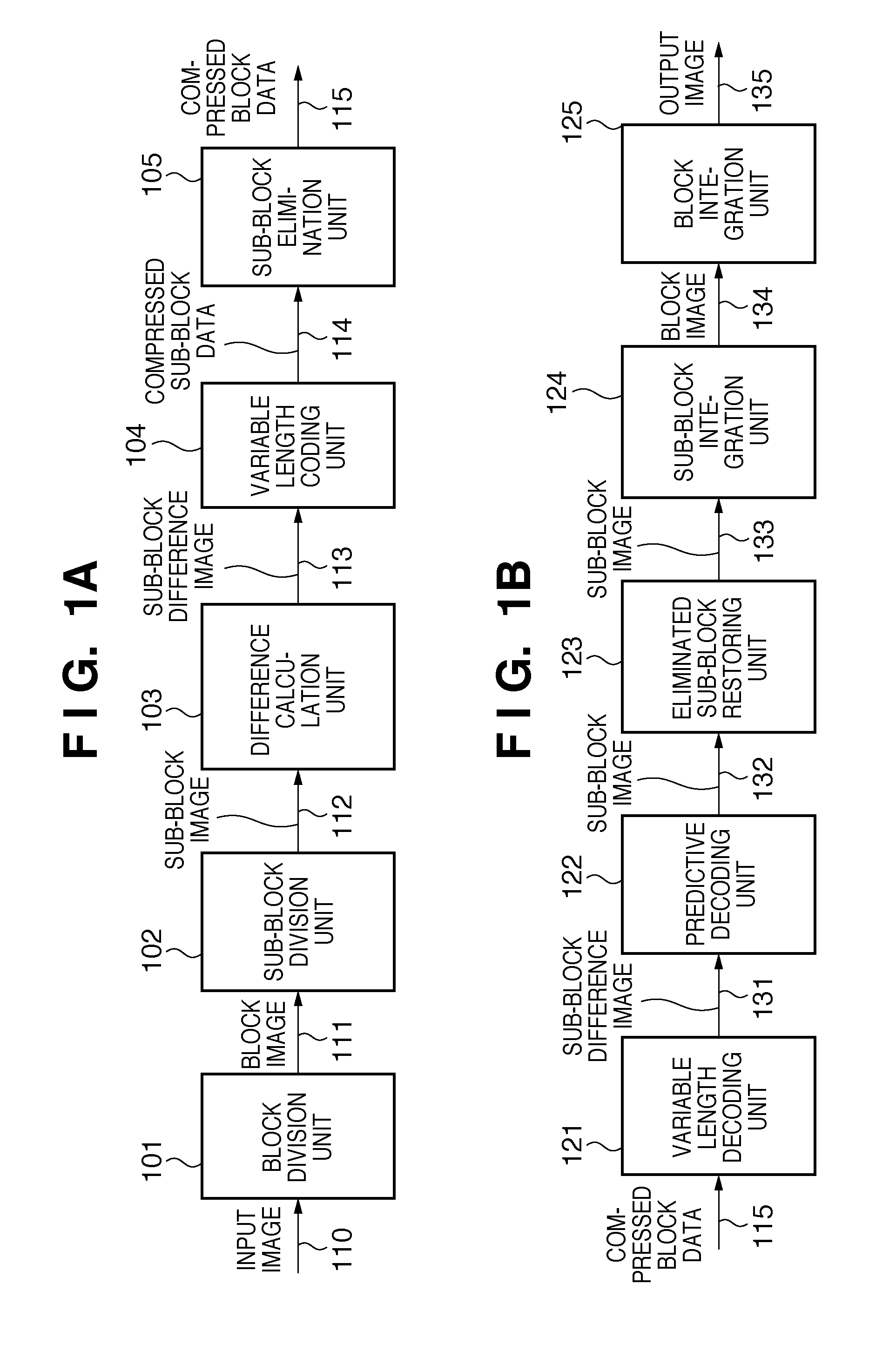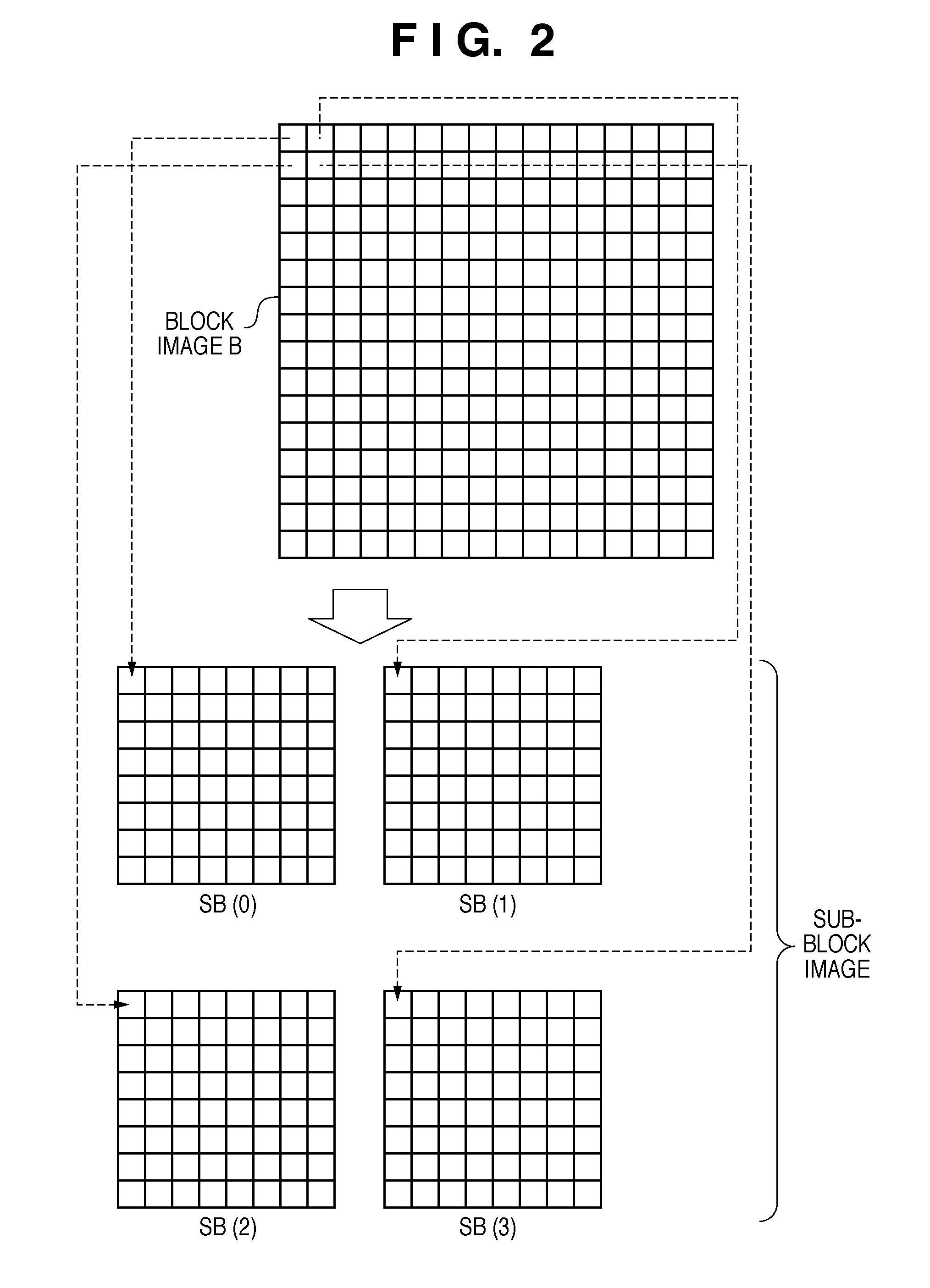Image encoding apparatus, image decoding apparatus, and control method therefor
a technology of image encoding and decoding apparatus, applied in the field of image encoding and decoding an image, can solve the problems of reducing information, reducing image quality, and reducing image quality, so as to suppress the degradation of image quality and reduce information
- Summary
- Abstract
- Description
- Claims
- Application Information
AI Technical Summary
Benefits of technology
Problems solved by technology
Method used
Image
Examples
first embodiment
[0048]FIG. 1A is a block diagram of the arrangement of an image encoding apparatus in the first embodiment. FIG. 1B is a block diagram of the arrangement of an image decoding apparatus.
[0049]The image encoding apparatus comprises a block division unit 101, sub-block division unit 102, difference calculation unit 103, variable length coding unit 104, and sub-block elimination unit 105. The image decoding apparatus comprises a variable length decoding unit 121, predictive decoding unit 122, eliminated sub-block restoring unit 123, sub-block integration unit 124, and block integration unit 125.
[0050]The image encoding apparatus will be explained first.
[0051]The block division unit 101 receives image data to be encoded via a signal line 110 for each block made up of a plurality of pixels. The block division unit 101 outputs the received block image to the sub-block division unit 102 via a signal line 111. Image data of a block will be simply referred to as a block image or block image d...
second embodiment
[0094]FIG. 7A is a block diagram of the arrangement of an image encoding apparatus in the second embodiment. FIG. 7B is a block diagram of the arrangement of an image decoding apparatus. The image encoding apparatus and image decoding apparatus in the second embodiment will become apparent from the following description, and are particularly suitable for a character-line image.
[0095]The image encoding apparatus in the second embodiment comprises a blocking unit 701, two-color extracting unit 702, identification information generating unit 703, encoding unit 704, and packing unit 705. The image decoding apparatus comprises an unpacking unit 711, registers 712 and 713, a decoding unit 714, a selector 715, and a rasterization unit 716. Buffer memories are interposed between the respective processing units in order to establish synchronization, but are not shown in FIG. 7A.
[0096]The image encoding apparatus in the second embodiment will be explained first. Also in the second embodiment,...
fifth embodiments
Third to Fifth Embodiments
[0127]The third to fifth embodiments according to the present invention will be described with reference to the accompanying drawings. Image data to be encoded in the following embodiments is binary image data. Note that the binary image is not only an image in which, for example, pixel values are 0 and 1. The embodiments can also be applied to even a case where, for example, the appearance densities of 8-bit pixel values are two, 50 and 150.
PUM
 Login to View More
Login to View More Abstract
Description
Claims
Application Information
 Login to View More
Login to View More - R&D
- Intellectual Property
- Life Sciences
- Materials
- Tech Scout
- Unparalleled Data Quality
- Higher Quality Content
- 60% Fewer Hallucinations
Browse by: Latest US Patents, China's latest patents, Technical Efficacy Thesaurus, Application Domain, Technology Topic, Popular Technical Reports.
© 2025 PatSnap. All rights reserved.Legal|Privacy policy|Modern Slavery Act Transparency Statement|Sitemap|About US| Contact US: help@patsnap.com



